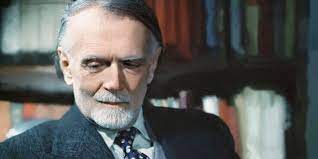Zoltán Kodály (1882–1967) was one of Hungary’s most important composers and music educators, whose works are rich with Hungarian folk traditions and sophisticated musical structures. He left a profound legacy through his compositions and his innovative approach to music education, known as the Kodály Method. Here are five of his most significant compositions that showcase his brilliance as a composer.
1. Háry János Suite (1926)
The Háry János Suite is perhaps Kodály’s most popular orchestral work. It is an orchestral suite drawn from his opera Háry János, a folk tale about a Hungarian soldier who spins tall tales of his exploits. The suite consists of six movements that use Hungarian folk melodies, and it is known for its lively rhythms and colorful orchestration. One of the most famous sections is the opening “Prelude: The Fairy Tale Begins,” which features a striking cimbalom part that captures the essence of Hungarian folk music.
2. Psalmus Hungaricus (1923)
Composed to celebrate the 50th anniversary of the unification of Budapest, Psalmus Hungaricus is a large-scale choral and orchestral work. It sets a 16th-century Hungarian translation of Psalm 55 to music, reflecting Kodály’s deep connection with his nation’s culture and history. The work is deeply emotional, with sweeping melodies and a powerful use of the chorus. It’s regarded as one of Kodály’s finest achievements, blending spirituality with Hungarian musical heritage.
3. Dances of Galánta (1933)
Commissioned for the 80th anniversary of the Budapest Philharmonic Society, Dances of Galánta is based on folk dances from the town of Galánta, where Kodály spent part of his childhood. The piece features a series of spirited dance movements, filled with lyrical woodwind solos, rapid tempos, and fiery energy. The work is a prime example of Kodály’s ability to integrate traditional Hungarian music into classical forms, using folk melodies in a fresh and dynamic way.
4. Sonata for Solo Cello, Op. 8 (1915)
The Sonata for Solo Cello is considered one of the most challenging and important works for the instrument in the 20th century. Composed in 1915, it is a three-movement piece that demands both technical mastery and deep emotional expression from the performer. The work explores the full range of the cello, using complex rhythms, dissonant harmonies, and extended techniques. This sonata is an example of Kodály’s forward-thinking approach to composition, and it remains a cornerstone of the solo cello repertoire.
5. Missa Brevis (1945)
Kodály composed his Missa Brevis during a turbulent time, as World War II was coming to an end. The piece was first performed in the basement of a Budapest convent while the city was under siege. Despite the bleak circumstances of its creation, the Missa Brevis is an uplifting and transcendent work, full of rich harmonies and beautifully crafted choral writing. Its structure follows the traditional Catholic mass, and the work is often praised for its spiritual depth and the skillful interplay between the choir and organ.
Conclusion
Zoltán Kodály’s compositions are steeped in Hungarian folk traditions, yet they are also deeply personal and universal in their appeal. From the folk-infused energy of the Dances of Galánta to the deeply spiritual Psalmus Hungaricus and Missa Brevis, Kodály’s music continues to captivate audiences around the world. These five compositions represent the essence of his genius, offering a glimpse into his profound connection to his heritage and his ability to express complex emotions through music.


Comments are closed